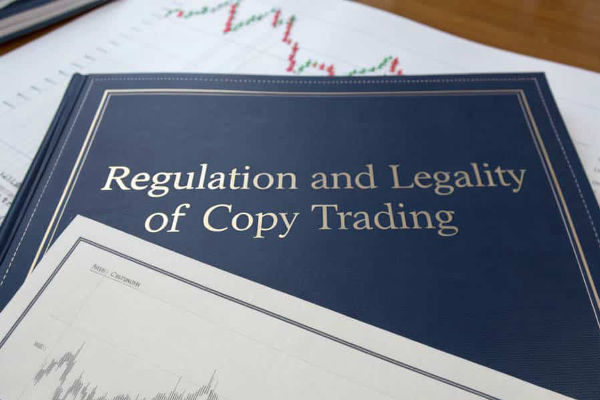Recently, copy trading has become a popular option for everyday investors or traders looking to get started. It allows you to follow and replicate the trades of more experienced traders, which can make investing feel more accessible and potentially profitable. However, like any investment approach, copy trading has its ups and downs. In this article, we'll take a closer look at the risks that come with copy trading and discuss some practical strategies to help you minimize losses and boost your chances of success.

Understanding Copy Trading
So, what exactly is copy trading? In simple terms, it's a strategy that allows you to automatically replicate the trades of successful traders. Many trading platforms make this process user-friendly, letting you choose traders based on their past performance, risk tolerance, and trading style. This makes it particularly appealing for those who may not have the time or expertise to manage their investments actively. But while it can simplify trading, it's essential to recognize the risks involved before diving in.
Risk of Copy Trading
When you start copy trading, one of the biggest things to keep in mind is the loss of control. By choosing to follow another trader, you're essentially putting your money in their hands. If the trader makes some bad decisions or goes through a rough patch, your account could really take a hit. That's why it's super important to get to know not just their trading strategy, but also how much risk they're comfortable with.
Another risk to consider is market volatility. The trading world can be quite unpredictable, and even the most experienced traders face challenges during shaky market conditions. Sudden changes can affect your investments, no matter who you're copying. Plus, your success is closely tied to the performance of the trader you've chosen. If they hit a rough spot or their strategies start to falter, your investments might take a dive too.
When you use automated systems for copy trading, it can be easy to feel overly confident. Some people believe that since they're just copying successful traders, it's a guaranteed way to make money quickly. This mindset can lead to complacency, where you might not feel the need to pay attention to your investments.
However, if you stop doing your own research or monitoring your investments closely, you might miss out on important changes in the market. This could lead to missed opportunities for profit or, worse, significant losses if things go wrong.
Additionally, using a third-party platform for copy trading comes with its own set of risks. These platforms can have technical problems, like glitches or even security breaches, which might prevent you from accessing your money or exposing your personal information to threats.
Rewards of Copy Trading
Despite these risks, copy trading can offer several potential rewards. For one, it gives novice traders access to the knowledge and strategies of more experienced investors. This can significantly enhance your chances of making profitable trades without needing extensive expertise. For those who are busy or simply prefer a hands-off approach, copy trading allows for efficient investing without requiring constant attention.
Additionally, following successful traders can provide valuable insights into effective trading strategies and market analysis techniques. It's an opportunity to learn from the best while potentially enjoying the benefits of their experience. Copy trading also allows for diversification—by following multiple traders with different approaches, you can spread your risk and reduce the likelihood of significant losses that come from relying solely on one trader's performance.
Strategies to Minimize Risks
To minimize risks in copy trading and maximize your chances of success, start by doing research on the traders you want to follow. It's a must to review their past performance, risk tolerance, and trading strategies. Look for traders with consistent returns and a risk profile that aligns with your target. Setting clear investment goals is important. Understanding what you want to achieve and how much risk you're comfortable with will help you make better choices about which traders to follow.
Another important strategy is diversification. Instead of relying on just one trader, spread your investments across several traders who use different approaches. This way, if one trader doesn't do well, you're less likely to face big losses. It's also crucial to keep an eye on the traders you're following. By regularly checking their performance, you can decide whether to stick with them or switch to someone else if their results start slipping. Most platforms offer risk management tools like stop-loss orders, which can automatically close a trade when losses hit a certain limit, helping to protect your investment.
Keeping your eyes on market conditions is another smart way to manage risk. By following market trends and economic news, you can make more informed decisions about your investments. Lastly, even though copy trading is a hands-off strategy, it's still important to stay engaged with your portfolio. Balancing copy trading with other investment methods can help you stay in control and manage your finances more effectively.
In short, copy trading offers some great opportunities, but it also comes with real challenges. By knowing the risks and using smart strategies to manage them, you can boost your chances of earning good returns while keeping losses in check. Like any investment approach, staying informed and always learning are key to success. Whether you're an experienced trader or just starting out, copy trading can be a useful tool—just be sure to approach it carefully and with a clear understanding of the risks.
Disclaimer: This material is for general information purposes only and is not intended as (and should not be considered to be) financial, investment, or other advice on which reliance should be placed. No opinion given in the material constitutes a recommendation by EBC or the author that any particular investment, security, transaction, or investment strategy is suitable for any specific person.



























